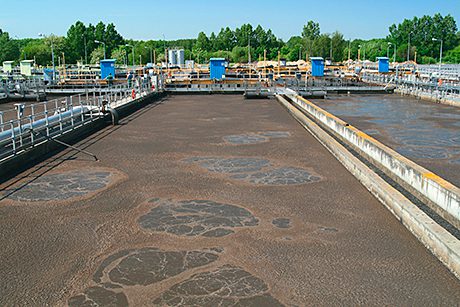
AN odour abatement system blending old and new technologies has proven its effectiveness in a Polish wastewater treatment application, a coup for the two UK companies involved.
A pilot study invited companies from all over Europe to design a system to combat VOC emissions from a Polish sewage sludge drying facility. One of those asked to take part was Flintshire-based Air-Water Treatment, a supplier of odour abatement equipment to the water industry.
According to AWT md John Naylor, the sewage sludge drying process is one of the most complicated processes from an odour control point of view. Speaking about his initial impressions of the Polish project, he commented: “We knew the design of that system would mean there would be some breakthrough of difficult hydrocarbons such as aldehyde and ketone compounds”.
AWT enlisted the expertise of Plasma Clean, a spin-off company from the University of Manchester and a developer of air purification systems. The two companies came up with a design that beat rivals from Germany and Italy in the Polish study.
At the site’s inlet point the total hydrocarbon levels were 45ppm. After being treated by a combination of AWT and Plasma Clean technology the measured total hydrocarbons were 0ppm over a five-month period, according to AWT.
In this study AWT used a combination of biofiltration, wet scrubbing and the company’s Peacemaker dry scrubber to treat the sulphides, mercaptans, amines and ammonia compounds within the gas stream.
Once these VOCs had been treated by AWT technology, it was Plasma Clean’s turn. The air was initially treated using the Xtract 2100 odour control system. Here, the VOCs were mixed with ozone, which attacks double bonds in VOC molecules by a process known as ozonolysis.
This was followed by treatment in Plasma Clean’s Techniclean UV-C module, where UV-C light is used to treat the ozone-activated air by a process known as photolysis – where photons are used to cleave double bonds in molecules.
During the test phase between June and September 2012, the AWT odour abatement technology reportedly reduced the hydrocarbons to 0ppm for three months. When the anticipated breakthrough occurred, Plasma Clean’s ozonolysis and photolysis technology reduced the breakthrough hydrocarbon emissions to 0ppm.







